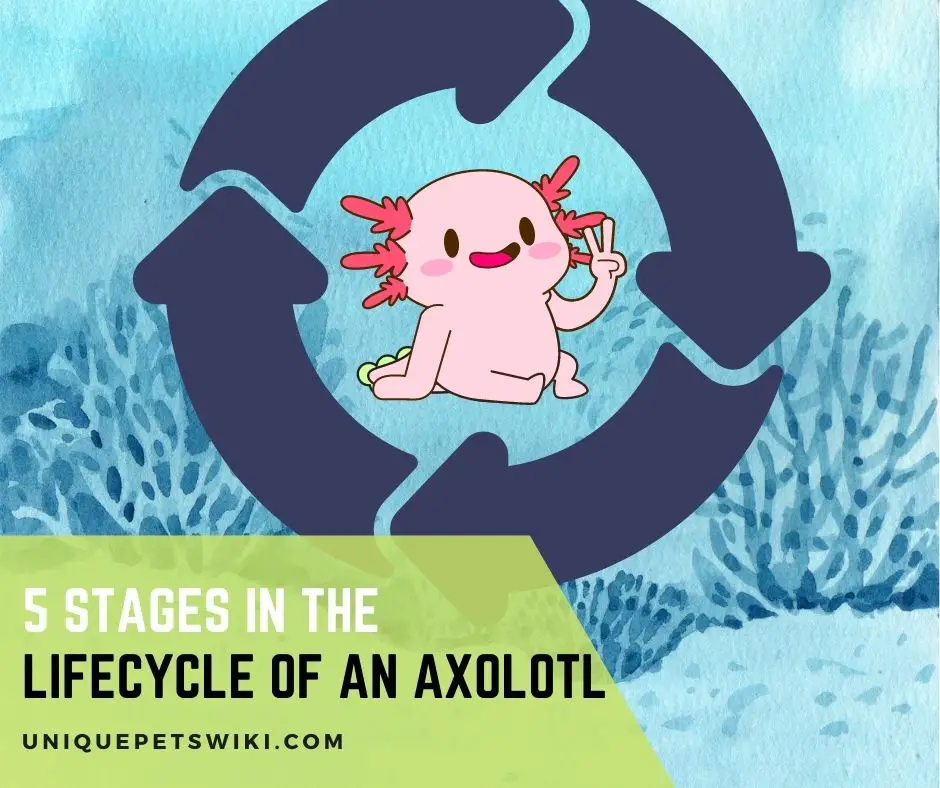If you’re planning to breed axolotls, then one of the most important considerations is regarding the stages in the lifecycle of your axolotl.
This knowledge is critical and can help you assess if your pet is growing normally and if the eggs are fertilized and thriving.
It is also fascinating studying the life stages of an axolotl and the topic can be a wonderful science project for curious minds.
An understanding of the stages in the life cycle of your axolotl will also help you know when your axolotl is fully grown, so you can provide it with the right nutrition and optimum living conditions.
Lifecycle Of An Axolotl
Whether you are a caring and concerned axolotl owner looking to breed axolotls or a student of science, the observation and know-how of the lifecycle of an axolotl can be a rewarding and cool undertaking.
An axolotl spends all its life under the water. It goes through 5 different stages starting with the female axolotl laying eggs. After hatching at about 15 days after fertilization, the larvae swim and feed for about two weeks with just the front limbs.
By 30 days, the hind legs come up and by 44 days, the axolotl has fully developed all four limbs. By one to one-and-a-half years, your axolotl is a sexually mature adult. An unusual thing about axolotl is that they stay in the larval stage all their life.
Let us study each of these stages.
Stage – 1 Eggs and Embryonic Stage
- Male axolotls release 6-30 spermatophores in the water which the female will take in her cloaca. According to experts, a healthy female axolotl can lay about 400-1000 eggs on plants in each spawning. The eggs are fertilized externally by the spermatophores.
- Live eggs measure about 1.1-1.5 cm whereas dead or unfertilized eggs are smaller and measure about 0.2 cm in size. They are covered with a protective jelly covering which protects them from bacterial infections and injury.
- If you plan to breed axolotls, please remove and collect the eggs attached to rocks and plants and place them in shallow plastic bowls. This is important to prevent them from being eaten by adult axolotls.
- Avoid overcrowding; place about 50-75 eggs in one container. The eggs that survive develop into embryos within the transparent egg sacs. The single cell undergoes division several times to develop clumps of cells.
- Do not allow the eggs to clump together otherwise, the embryos in the center of the clumps won’t receive adequate oxygen and might die. Sort the embryos that are a day old. This is a good time to remove the infertile eggs.
- Since temperature is critical for raising the eggs of your axolotl and ensuring their survival and development, maintain it at 22 C or 72 F.
- This stage lasts for about a week. By the end of this stage, you might even see your axolotl’s delicate feathery gills and dorsal tail.
- The eggs/embryos kept at room temperature will hatch at about 2-3 weeks after the female has laid them on the plants. Right before hatching, your axolotls’ eggs measure up to 10 mm in diameter.
- Once the larvae are out, remove the discarded jelly encapsulations carefully with a pipette. Some larvae may not be able to hatch on their own and you might have to gently puncture their capsules with forceps.
- Axolotl larvae spawned at the same time will never have the same measurements. So, if you plan to separate them, be sure to do so by considering larvae of the same or similar sizes.
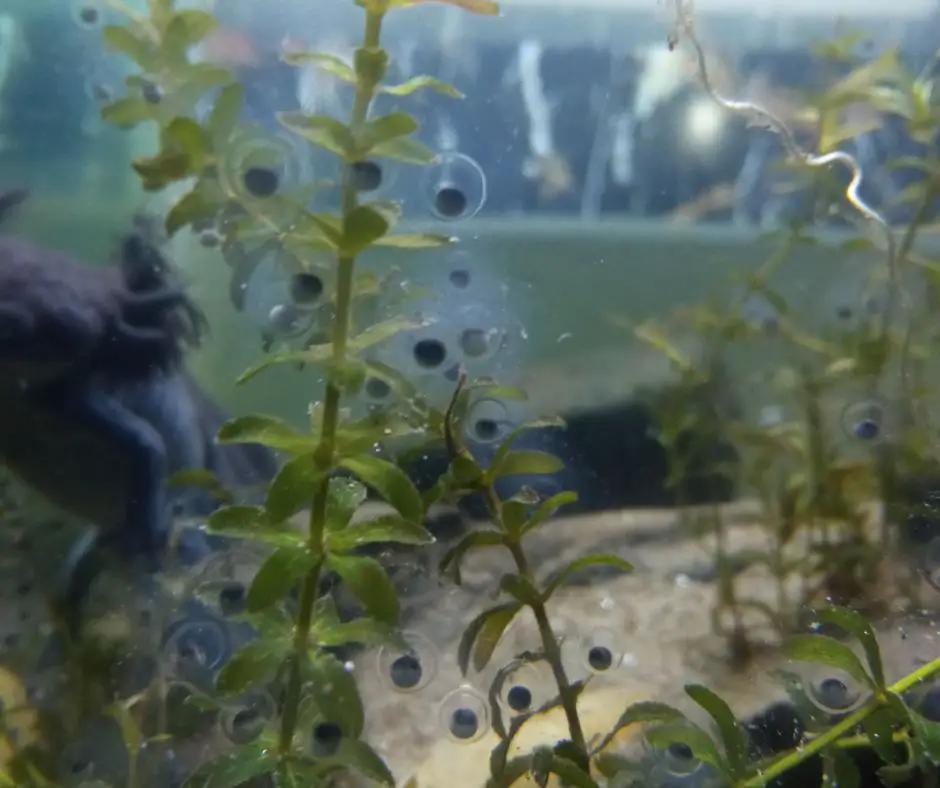
Stage 2 – Limbless Larvae
- At this stage, the larvae are almost transparent to the point where you can see their internal organs. Limbless larvae typically resemble a small fish or tadpole and may even have the beginning of gill buds.
- Without food, the stronger larvae won’t hesitate to eat the weaker ones. They will also snap at anything that moves so be sure to keep larvae measuring 2 cm – 5cm by themselves. Keep the larvae in deep containers or plastic bowls with tall edges to prevent them from jumping out.
- Keep the axolotl larvae at cool temperatures between 18-22 C or about 65-72 F. Warm temperatures are dangerous to axolotls. To prevent overheating, keep them away from direct sunlight.
- Make regular water changes. Ideally, you could change the water right before and after feeding your larvae.
- The diet at this stage is very important. You must feed your larvae live brine shrimp soon after they hatch. Strain the shrimp from their brine and suspend them in the axolotl water. Feed enough shrimp so that each larva gets its fill. Continue feeding until some brine shrimp are left behind in the water and your larvae’s bellies appear orange in color.
- Change the water after feeding since leftover brine shrimp can alter the water chemistry
Stage – 3 Larvae with Front Limbs
- After about 10-15 days of hatching, the larvae will develop their front two limbs. The limbs even have tiny toes!
- Axolotl larvae with front limbs measure about 2 to 2.5 cm in length.
- You might also start to see the feathering of the gills that axolotls are so famous for.
- By day 20, you might see the beginning of the buds of the hind legs. The front legs should be fully developed and the larvae will be about 2.5-2.7 cm long.
- Again, please continue feeding your larvae live brine shrimp otherwise, they won’t hesitate to eat the weaker larvae. Feed your larval axolotls at least twice a day.
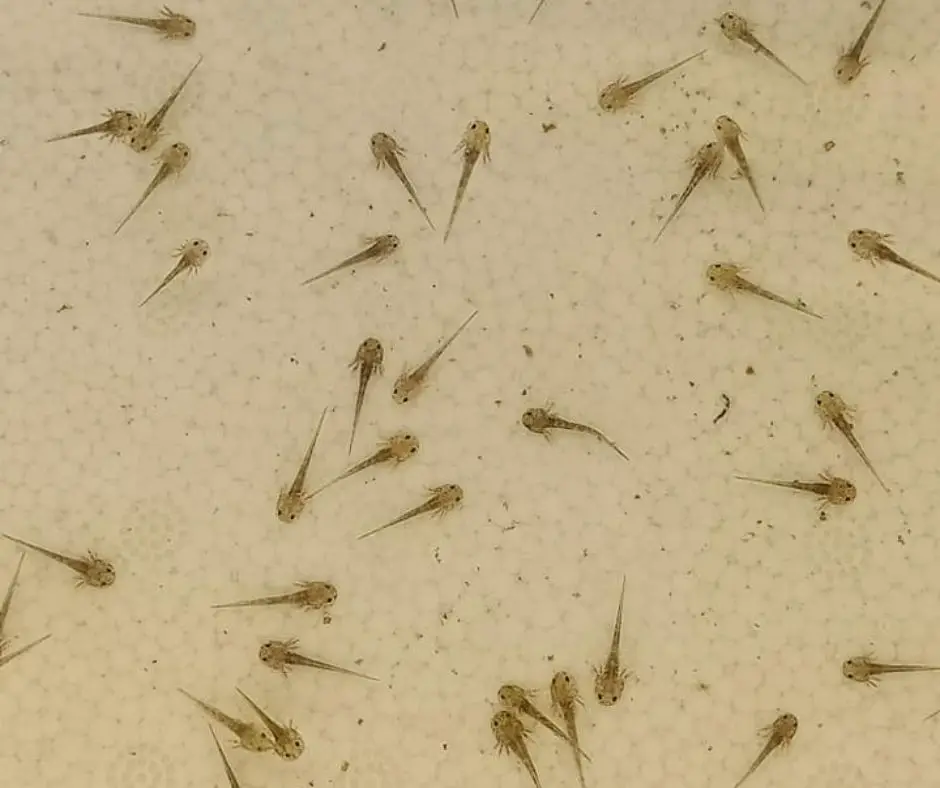
Stage 4- Larvae With Front and Hind Limbs
- By day 30, your axolotl larvae will develop strong front limbs and the hind limbs will also be growing well.
- Their front limbs will have four toes on each foot and the hind limbs will have 5 toes on each foot.
- At this stage, the length of the axolotl is around 4 to 4.5 cm. This stage lasts for a long time.
- Continue feeding your larval axolotls twice a day. They can now be fed live foods like daphnia, brine shrimp, and micro-worms.
- If any larvae have lost their toes or limbs to other larvae, worry not- they will regenerate them!
Stage 5- Young Adult Axolotls
- By 4-6 months, the axolotl larvae can be considered miniature adults, juvenile axolotls, or young adults.
- Unlike other amphibians that undergo metamorphosis, axolotls are neotenic. This means that they undergo pedomorphosis to remain in the young adult stage all their lives by retaining many of their juvenile characteristics.
- By the time your axolotls are around 5-6 inches, you can feed them every 2-3 days. Continue to feed live and frozen foods. Pelleted foods or commercial diets are also important. You can feed one pellet per inch of axolotl or as advised on the food label.
- According to experts, male axolotls become sexually mature at the age of 9 months while females become mature at 1 year after fertilization. Female axolotls then proceed to lay hundreds of eggs. The laying of eggs begins the life cycle.
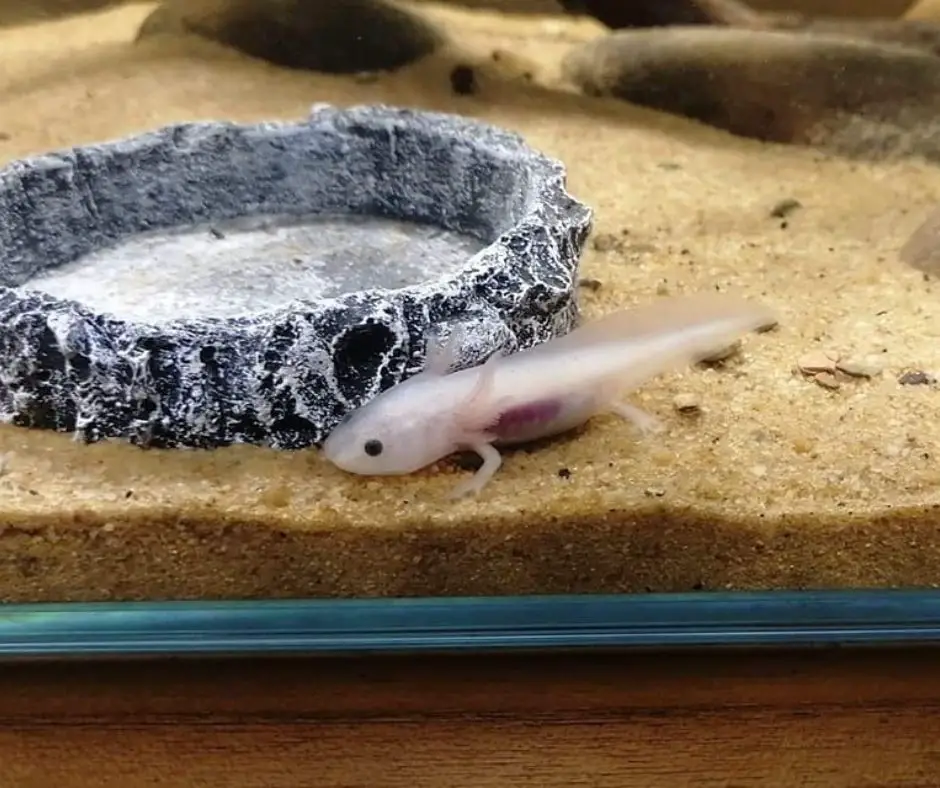
How Long Does It Take for Axolotls to Be Fully Grown?
As mentioned before, axolotls require 6-12 months to attain full growth. In adulthood, most axolotls may measure between 10-16 inches in length.
Some axolotls are known to take 18-24 months to reach sexual maturity and reproduce. However, this is rare and may be due to poor water parameters or genetic issues.
Please check out our guide on Axolotl Growth Rate to understand the factors that may impact your axie’s growth.
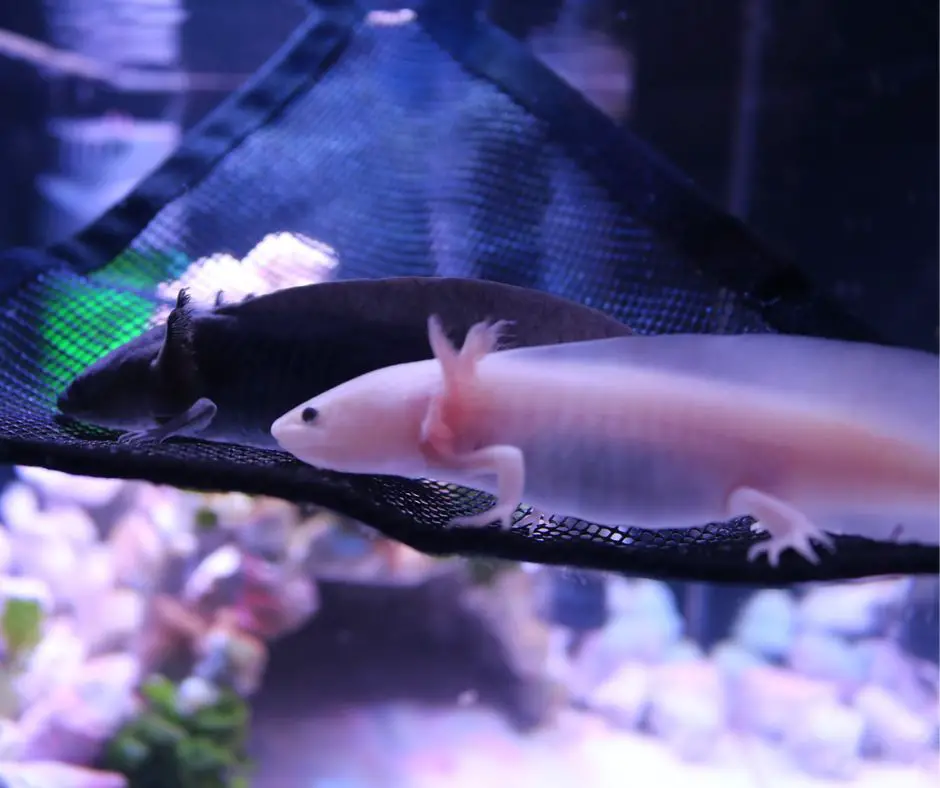
Aqueon Shrimp Pellets Fish Food
- Ideal for bottom dwelling fish
- Nutritious food ingredients that fish are naturally attracted to
- Formulated so that fish utilize more of what they eat and create less waste
- Supports a healthy immune system, brings out their true colors and provides the essentials for proper growth and vitality
- Will not cloud water when fed as directed
Last update on 2022-12-30 / Affiliate links / Images from Amazon Product Advertising API
How many stages are there in an axolotl lifecycle?
The axolotl has 5 stages in its lifecycle starting from the egg or embryonic stage, followed by three larval stages, and the final adult stage.
How long does the lifecycle of an axolotl last?
Starting with the egg on day 1, the larval stage usually begins on day 15 when they hatch. By day 30, the larvae develop their front limbs. By day 44, they may develop their hind limbs. An axolotl is considered an adult or said to reach sexual maturity by 6-12 months although in rare cases, some axolotls are late bloomers and only mature after 18 months to 2 years.
What if the Lifespan of an Axolotl?
In the wild, axolotls can live for 5-6 years. In captivity, they may live for 10-12 years if you provide proper water conditions and optimum husbandry.
Conclusion
Axolotl’s lifecycle consists of 5 stages. These include the egg or embryonic stage followed by three larval stages, which then transition to the adult stage.
An axolotl may be considered a sexually mature adult by the time it is about 12 months of age. At this point, the female may lay eggs and the life cycle continues.
We hope this guide helps you carefully hatch your axolotl eggs so they turn into beautiful adults!
